Nationwide directory of intangible cultural heritage
The nationwide directory of intangible cultural heritage is a compilation of important intangible cultural assets in the Federal Republic of Germany . The list was made from 2013 in implementation of the UNESCO Convention for the Preservation of Intangible Cultural Heritage, which came into force in 2006 and which Germany joined in 2013. At the global level there is the Representative List of the Intangible Cultural Heritage of Humanity .
Cultural forms of expression such as dance, theater, music, customs, festivals and handicrafts, which are of particular importance locally, regionally and nationally in Germany, are included in the directory. The cultural forms must be practiced in Germany, but their origin can also be outside of Germany. As of December 2018, the directory contains 88 intangible cultural assets and nine practical examples of the preservation of intangible cultural heritage.
Method of creation
The Intangible Cultural Heritage office set up at the German UNESCO Commission is entrusted with coordinating the procedure for creating the directory. Groups and networks with common interests are invited to set application phases to apply for the directory with their lively everyday culture, knowledge and skills. After the federal states make a pre-selection, the Conference of Ministers of Education and Cultural Affairs checks the applications and sends them to the Expert Committee on Intangible Cultural Heritage , which is convened by the Intangible Cultural Heritage Office. The final list of proposals from the committee of experts will be submitted to the Conference of Ministers of Education for evaluation.
Application phases
The first application phase for inclusion in the nationwide directory was from May 3, 2013 to November 30, 2013. 128 proposals were received for the first proposal list, of which 83 made it onto the shortlist. These proposals covered all possible areas of the Convention. There were 29 proposals from the field of customs, rituals and celebrations, 19 from the field of the performing arts, 19 from the field of handicraft traditions, 13 from the field of forms of knowledge in dealing with nature and the universe and 3 from the Oral storytelling field.
Finally, out of these 83 candidates, the panel of experts recommended 27 cultural forms for inclusion, including some regional customs. After the Conference of Ministers of Education and Cultural Affairs approved the recommendations on December 11, 2014, the first tranche of the nationwide directory was published. On March 16, 2015, the cultural forms of expression were awarded in Berlin. Another 22 proposals are still in the process, 13 of which have been postponed due to lack of information. In December 2015, seven of the postponed applications were subsequently added to the nationwide directory of intangible cultural heritage.
The second application round ran from March 2 to October 30, 2015. In December 2015, seven further forms of culture were added to the nationwide directory of intangible cultural heritage in Germany. For the first time, two examples of good practice were honored and included in the German register of good practice examples : Manufactory jewelry design and the preservation and promotion of culture, diversity and quality of regional specialties in Upper Franconia. The register shows as a model how intangible cultural heritage can be effectively preserved.
On December 9, 2016, in the course of the third application round, 34 cultural forms and two good practice examples of the preservation of intangible cultural heritage were newly added to the nationwide directory. In addition to the East Frisian tea culture, the poetry slam and midwifery, the traditional craft technique of blue printing was recognized as an intangible cultural heritage. Thanks to the cooperation of Germany, Austria, Hungary, the Czech Republic and Slovakia, the blueprint was also included in the UNESCO Representative List of the Intangible Cultural Heritage of Humanity at the end of 2018.
On March 16, 2018, seven new entries were added to Germany's directory of intangible cultural heritage.
Since December 11, 2018, the Augsburg High Peace Festival, the contemporaries' festivals in Schwäbisch Gmünd, the Hauberg economy in Siegerland and 13 other lively cultural forms have also been part of the intangible cultural heritage in Germany. In addition, two model programs, the world dance program and the German-Danish minority model, have been included in the German register of good practice examples.
Inclusion in the nationwide list of intangible cultural heritage is a prerequisite for applying for registration on the Representative List of Intangible Cultural Heritage of Humanity of UNESCO . The cooperative idea was submitted to UNESCO on March 27, 2015 as the first proposal for the international list from Germany . With this proposal, Germany wants to give a new impetus and for the first time put a form of social self-organization on the representative list of the intangible cultural heritage of humanity. Friedrich Wilhelm Raiffeisen and Hermann Schulze-Delitzsch first founded cooperatives as a form of company by formulating legal and theoretical principles. In doing so, they have laid the basis for modern, globally widespread cooperatives. The proposal was accepted by UNESCO at the end of 2016.
In 2017, the UNESCO Committee for Intangible Cultural Heritage added organ building and organ music to the representative UNESCO list on a proposal by Germany. In 2018, the blueprint was recognized as an Intangible Cultural Heritage of Humanity. Germany and four other countries participated in the nomination.
Intangible cultural heritage
Intangible cultural heritage is expressed in six areas , the transitions of which are fluid:
- M… Orally transmitted traditions and forms of expression , including language as the bearer of intangible cultural heritage
- D… performing arts
- G… social practices, rituals and celebrations
- U ... knowledge and practices in dealing with nature
- H… traditional craft techniques
- S… forms of social self-organization
| Surname | year | state | description | image | Area |
|---|---|---|---|---|---|
| Choral music in German amateur choirs | 2014 | Cross-country | The tradition of German amateur choirs has been a form of cultural expression that has been practiced for a thousand years and has its origins in the religious environment of the churches. Music is deeply rooted in the middle of society through choral music in amateur choirs. The creative appropriation of text and music as well as the artistic vitality of the people are mobilized by the activity of the choirs. At the same time, the practice of singing is aimed at identity-creating common ground and public work. unesco.de |

|
M, D |
| Saxon boys' choirs | 2014 | Saxony | The St. Thomas Boys Choir at the St. Thomas Church in Leipzig , the Cross choir at the Holy Cross Church in Dresden and the Dresden Kapellknaben at the Court Church in Dresden are three of the most important boys' choirs in Germany. They have existed since the 13th century with the main task of providing musical accompaniment to church services. unesco.de |

|
M. |
| Singing the songs of the German labor movement | 2014 | Cross-country | The songs of the German labor movement have been created and sung since the 19th century as part of actions of the labor movement and movements close to it. They are an expression of discrimination and oppression of wage earners. With the musically innovative further development of the workers' songs by Kurt Weill , Hanns Eisler and Bertolt Brecht , they reached a high level of artistic development in the German cultural area. unesco.de |
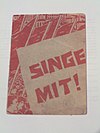
|
M, D, S |
| Modern dance - styles and forms of conveying rhythm and expressive dance movement | 2014 | Cross-country | The Modern dance includes the beginning of the 20th century, resulting in the German speaking and still living modern dance styles and traditions of training rhythm and expressive dance movement. With their innovative artistic-choreographic approaches and communication methods, they had a lasting impact on modern stage dance and dance education. unesco.de |

|
D. |
| German theater and orchestra landscape | 2014 | Cross-country | The German theater and orchestral landscape is characterized by a variety of artistic forms of expression that is unique in the world, which are realized in drama , puppet theater, opera , operetta , musical , dance , concert and in various types of performative events. unesco.de |

|
D. |
| Low German theater | 2014 | Cross-country | The Low German Theater combines theater and the regional language Low German . The language, which is mainly spoken within family and friends, gains an artistic dimension through the Low German Theater. unesco.de |

|
M, D |
| Passion Play Oberammergau | 2014 | Bavaria | For 400 years, the villagers of Oberammergau have performed passion plays every ten years . Half of the entire population voluntarily represents the last five days in the life of Jesus in a performance lasting several hours. Over 500,000 spectators from all over the world were guests at the Passion 2010. unesco.de |

|
D. |
| Peter and Paul Festival Bretten | 2014 | Baden-Württemberg | At the Peter and Paul Festival in Bretten , almost 4,000 women, men and children in historical clothing present episodes from the city's history to up to 140,000 visitors. The focus is on the successful failure during a siege by Duke Ulrich of Württemberg in 1504. unesco.de |

|
G |
| Malchower Volksfest | 2014 | Mecklenburg-Western Pomerania | The folk festival in Malchow on the first weekend in July every year has been celebrated since 1853, making it the oldest local festival in Mecklenburg-Western Pomerania. The highlights of the festival include marching bands and fanfares with brass bands, a parade on the Malchower See with decorated and illuminated boats and a fireworks display with classical music. unesco.de |
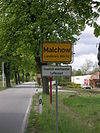
|
G |
| Swabian-Alemannic Carnival | 2014 | Baden-Württemberg | The Swabian-Alemannic Carnival is celebrated as a fixed date in the church year around the seventh weekend before Easter in numerous parishes in Baden-Württemberg . The characteristics of the festivities include the total disguise and masking of the actors. The first main day with a wide range of customs is the “ Dirty Thursday ” three days before Shrove Sunday . The highlight of the events on Shrove Monday and -Dienstag with spectacular parades . unesco.de |

|
G |
| Rhenish carnival with all its local variations | 2014 | North Rhine-Westphalia | The festival complex of the Rhenish Carnival dates back to the beginning of the 13th century. It is a threshold festival just before Lent in the Christian year. At the beginning of the 19th century, a bourgeois form of carnival developed from Cologne . Important elements of the Rhenish Carnival include the processions , carnival societies , ceremonial meetings with often political hand-made speeches , masked balls and carnival songs in dialect. unesco.de |

|
G |
| falconry | 2014 | Cross-country | Falconry is the hunt with trained birds of prey for wild game in its natural habitat. Taming, dressing and instilling a Beizvogels by the falconer and the falconer is a sensitive process in which the bird of prey get used slowly and only with positive experiences and rewards to the falconer. unesco.de |

|
G, U, H |
| Social customs and festivals of the Lusatian Sorbs throughout the year | 2014 | Cross-country | The Sorbs maintain around 30 customs throughout the year, starting with the Woklapnica parish meeting / “Knocking off the old year” through to the Christ Child at Christmas time. The bird wedding , the Sorbian / Wendish carnival "Zapust" and the celebrations after the harvest in late summer are among these customs. unesco.de |

|
G |
| Biikebrennen | 2014 | Schleswig-Holstein | The Biikebrennen is a spring or carnival fire to drive away evil spirits and protect the new seeds. On February 21, more than 60 large fires are lit every year in Schleswig-Holstein on the islands of Sylt , Amrum and Föhr , on the Halligen and in large parts of the North Frisian mainland. unesco.de |

|
G |
| Lindenkirchweih Limmersdorf | 2014 | Bavaria | The focus of a Lindenkirchweih is the often ancient dancing linden tree of the respective location. At the annual parish fair, people dance on a dance platform in the wide-spread crown of the tree. However, real dance linden trees are characterized by the fact that their branches are guided in such a way that they can carry a dance platform - which is additionally supported by columns. The dance linden tree planted in Limmersdorf in 1686 has been danced without interruption since at least 1729. unesco.de |

|
G, U |
| Confrontation with the Pied Piper of Hamelin | 2014 | Lower Saxony | The story of the Pied Piper of Hameln is one of the most famous German folk tales . In Hameln, there is an intensive and varied examination of the legend . Every 25 years, the citizens of Hameln celebrate the pied piper anniversary with a large street parade. The Pied Piper Open Air Play is performed every summer and the legend is brought to the stage with the musical "RATS" every year from spring to autumn. In addition, there are numerous private initiatives by the citizens of Hameln who creatively deal with the Pied Piper legend. unesco.de |

|
M, D, G |
| Saltworkers Brotherhood in the valley of Halle | 2014 | Saxony-Anhalt | The saltworker brotherhood in the Thale zu Halle looks back on a tradition of salt boiling that is more than 1000 years old. There is evidence that the salt workers have been organized in their own brotherhood since 1491. Salt boiling as a former source of income for the Halloren still represents the basis of brotherhood life today. Unesco.de |

|
G, H |
| Cooperative idea | 2014 | Cross-country | The cooperative idea is a non-denominational model of self-help, self-administration and self-responsibility based on cooperation that is open to all interested parties. The "fathers" of the cooperative idea, Hermann Schulze-Delitzsch and Friedrich Wilhelm Raiffeisen , founded the first cooperative organizations in Germany in the middle of the 19th century. unesco.de |

|
S. |
| German bread culture | 2014 | Cross-country | German bread is unique in its diversity. The variety extends to both the selection of ingredients and different manufacturing methods. The bread is a central component for places and moments in which people meet in order to communicate. Sociability and bread are also a pair of terms that are deeply rooted in the Christian context or in the customs of bourgeois Christians. unesco.de |

|
G, U, H |
| Finch maneuvers in the Harz Mountains | 2014 | Lower Saxony, Saxony-Anhalt | The finch maneuver in the Harz is a singing competition between chaffinches with two competition disciplines, which is held in spring. The knowledge about catching and keeping as well as rearing, care and training of birds is passed down from Finker to Finker. unesco.de |

|
U |
| rafting | 2014 | Cross-country | The craft of rafting is the transport of wood by water from wood-rich to wood-poor areas. In the past, rafting in Germany played a prominent role in view of the huge demand for wood in all areas of society. Since the end of commercial rafting, tourist rafting is still widespread today. unesco.de |

|
G, U, H |
| Morse code | 2014 | Cross-country | The age of electrical communications began in the mid-1830s. Using short and long drawing elements , messages could be transmitted as Morse code without material worldwide. The Morse Code was created 150 years ago by the German Friedrich Clemens Gerke in the form that is still officially and worldwide today . unesco.de |

|
U, H |
| Organ building and organ music | 2014 | Cross-country | The organ landscape has grown historically since the Baroque and is regionally shaded (northern, central, southern German). In addition to various locally and regionally specific organ building styles, there is a wide range of composition and performance practice as well as training opportunities for organ musicians at universities and church institutions. unesco.de |

|
MORON |
| Charcoal trade and tar smelling | 2014 | Cross-country | The charring of wood is one of the oldest handicraft techniques known to man. In the process, fuels are produced which are mainly of solid ( charcoal ), liquid ( wood tar ) or gaseous consistency ( wood gas ). During this process, the solar energy stored in the biomass is released for the purpose of generating energy. unesco.de |

|
U, H |
| Vogtland musical instrument manufacture in Markneukirchen and the surrounding area | 2014 | Saxony | Musical instruments have been manufactured in the region around Markneukirchen for around 350 years . Almost all string , plucked , woodwind , brass , percussion and harmonica instruments of European music including bows , components and accessories are manufactured. This means that musical instrument making in the Vogtland Musikwinkel has a concentration and variety that is unique in the world. Traditional musical instrument making is practiced by around 1,300 craftsmen in more than 100 workshops. unesco.de |

|
U, H |
| Thatched roofing craft | 2014 | Mecklenburg-Western Pomerania | Covering roofs with thatch is one of the oldest handicraft techniques in house building. Common reeds or pond reeds serve as the basic material for thatched roofs. It takes great technical skills to design the roofs with reeds. unesco.de |

|
H |
| Journeyman craft tour waltz | 2014 | Cross-country | The journeyman's journey is the tradition of going abroad as a “bachelor” after acquittal and successfully completing the apprenticeship. The aim of the Walz is to train yourself professionally as well as to broaden your personal horizons and independence. unesco.de |

|
G, H |
| Folk dance movement in its regional forms in Germany | 2015 | Cross-country | unesco.de |

|
|
| Chant singing | 2015 | Cross-country | unesco.de |
|
|
| Carol singing | 2015 | Cross-country | unesco.de |

|
|
| Riflemen in Germany | 2015 | Cross-country | unesco.de |

|
|
| Ehrsames fools court to Grosselfingen | 2015 | Baden-Württemberg | unesco.de |

|
|
| Kneipp - traditional knowledge and practice based on the teachings of Sebastian Kneipp | 2015 | Cross-country | unesco.de |

|
|
| Manual glass production | 2015 | Cross-country | unesco.de |

|
|
| Tölzer Leonhardiffahrt | 2016 | Bavaria | unesco.de |

|
|
| Barther Children's Festival | 2016 | Mecklenburg-Western Pomerania | It has been celebrated since 1828, making it the oldest in present-day Mecklenburg-Western Pomerania and one of the oldest in the world. unesco.de | ||
| Blueprint | 2016 | Cross-country | unesco.de |

|
|
| Wunsiedler Brunnenfest | 2016 | Bavaria | unesco.de |

|
|
| Mountain parades and mountain lifts in Saxony | 2016 | Saxony | unesco.de |

|
|
| Field jurors in Bavaria | 2016 | Bavaria | unesco.de | ||
| Inner-city horticulture in Bamberg | 2016 | Bavaria | unesco.de | ||
| Braiding trade | 2016 | Cross-country | unesco.de |

|
|
| Traditional river fishing at the confluence of the Sieg in the Rhine | 2016 | North Rhine-Westphalia | unesco.de |
|
|
| Sennfelder and Gochsheim Peace Festival | 2016 | Bavaria | unesco.de | ||
| Georgiritt and historical sword dance Traunstein | 2016 | Bavaria | unesco.de |

|
|
| Twice | 2016 | Bavaria | unesco.de | ||
| Barrel knocking off | 2016 | Mecklenburg-Western Pomerania | unesco.de |

|
|
| East Frisian tea culture | 2016 | Lower Saxony | unesco.de |

|
|
| Westerwald stoneware pottery tradition in and around Höhr-Grenzhausen, Kannenbäckerland and Breitscheid | 2016 | Rhineland-Palatinate | unesco.de |
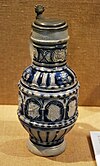
|
|
| Porcelain painting | 2016 | Cross-country | unesco.de |

|
|
| Chess tradition in Ströbeck | 2016 | Saxony-Anhalt | unesco.de |
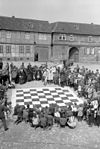
|
|
| To play Skat | 2016 | Cross-country | unesco.de |

|
|
| Eisenach summer win | 2016 | Thuringia | unesco.de |

|
|
| Trumpet Choirs | 2016 | Cross-country | unesco.de |

|
|
| Preparation and application of traditional lime mortar | 2016 | Cross-country | unesco.de | ||
| Forster Hanselfingerhut game | 2016 | Rhineland-Palatinate | unesco.de |
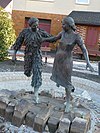
|
|
| Historical festival "Die Kinderzeche" in Dinkelsbühl | 2016 | Bavaria | unesco.de |

|
|
| Poetry competition in German-speaking countries | 2016 | Cross-country | unesco.de | ||
| Lace making in the Upper Palatinate Forest | 2016 | Bavaria | unesco.de |

|
|
| Heiligenstadt Palm Sunday procession | 2016 | Thuringia | unesco.de |

|
|
| Lottery | 2016 | Bavaria | unesco.de |

|
|
| Midwifery | 2016 | Cross-country | unesco.de |
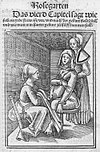
|
|
| Painting, barrel and gilding techniques of church painting | 2016 | Cross-country | unesco.de |

|
|
| Hessian scratch plaster | 2016 | Hesse | unesco.de |

|
|
| To tell fairytales | 2016 | Cross-country | unesco.de |

|
|
| Historical festival "Der Meistertrunk" at Rothenburg ob der Tauber | 2016 | Bavaria | unesco.de |

|
M, D, G |
| Instrumental amateur and amateur music- making | 2016 | Cross-country | unesco.de | ||
| Regional diversity of dialect theaters in Germany | 2016 | Cross-country | unesco.de |

|
|
| Historical documentary game "Landshut Wedding 1475" | 2018 | Bavaria | unesco.de |

|
|
| Further Drachenstich | 2018 | Bavaria | unesco.de |

|
|
| Spergauer Candlemas | 2018 | Saxony-Anhalt | unesco.de | ||
| Artistic printing techniques of letterpress, gravure, planographic printing, screen printing and their mixed forms | 2018 | Cross-country | unesco.de | ||
| Augsburg High Peace Festival | 2018 | Bavaria | unesco.de | ||
| Fürther Michaeliskirchweih ("Kärwa") | 2018 | Bavaria | unesco.de | ||
| Citizen sons elevator to Lingen "The Kivelinge " from 1372 | 2018 | Lower Saxony | unesco.de | ||
| Easter bike race in Lügde | 2018 | North Rhine-Westphalia | unesco.de | ||
| The tradition of the shepherd's run and shepherd's craft in Markgröningen , Bad Urach and Wildberg | 2018 | Baden-Württemberg | unesco.de | ||
| Tree farming and traditional dried fruit production in the Steigerwald | 2018 | Bavaria | unesco.de | ||
| Woodturning trade - traditional technique of mechanical material processing based on rotating workpieces | 2018 | Throughout Germany | unesco.de | ||
| The preservation and use of the Zeesboot in the Mecklenburg-Western Pomerania lagoon landscape | 2018 | Mecklenburg-Western Pomerania | Preservation and use of the former fishing boats in traditional Zeesboot regattas and recreational sailing. | ||
| Craft milling in windmills or water mills | 2018 | Throughout Germany | The craft milling in windmills or water mills serves to preserve the traditional miller's craft. | ||
| The traditional handicraft production of Darßer doors | 2018 | Mecklenburg-Western Pomerania | Darßer doors are artistically carved and brightly painted. | ||
| Planting and maintaining wattle hedges | 2018 | Throughout Germany, mainly in the Nieheim area | With the tradition of hedge braiding, which is still widespread in the Nieheim area, the hedges are tied in anew every year from late winter to spring. | ||
| Hauberg economy in Siegerland and neighboring regions | 2018 | North Rhine-Westphalia | The Haubergswirtschaft is a locally anchored and sustainable form of forest management. | ||
| Meadow irrigation in the Queichwiesen between Landau and Germersheim | 2018 | Rhineland-Palatinate | The traditional irrigation of meadows follows the technique of barrage irrigation . It is carried out as year-round management with spring and summer irrigation. | ||
| Celebrations of peers in Schwäbisch Gmünd | 2018 | Baden-Württemberg | At the “peers”, those born in the same year meet for social activities and a peer festival. | ||
| Helgoland steamer broke | 2018 | Schleswig-Holstein | In the tradition of the steamboat port, the passengers of the anchored seaside resort ships are transported to and from board by boat. | ||
| Upper Palatinate Zoigl culture | 2018 | Bavaria | The Upper Palatinate Zoigl culture includes brewing together as well as the local serving of Zoigl beer, accompanied by various rituals and forms of communication. | ||
| Passenger raft trips on the Isar and Loisach from the Oberland to Munich | 2020 | Bavaria | Regular transport of people across waterways on rafts has been documented in the southern Bavarian Oberland since the Middle Ages. They are part of a craft tradition as well as in the context of historical forms of mobility. Today's passenger raft trips on the Isar and Loisach are rooted in this centuries-old tradition. |

|
Good practice examples
The register of good practice examples of the preservation of intangible cultural heritage in Germany includes model projects to protect and strengthen intangible cultural heritage. The programs, projects and activities for the preservation of intangible cultural heritage are intended to provide inspiration for the promotion of cultural expressions.
| Surname | year | state | description |
|---|---|---|---|
| Preservation and promotion of culture, diversity and quality of regional specialties in Upper Franconia | 2015 | Bavaria, Upper Franconia | unesco.de |
| Manufactured jewelry design | 2015 | Cross-country | unesco.de |
| Research and documentation of field and house names in Bavaria | 2016 | Bavaria | unesco.de |
| High alpine Allgäu alpine farming culture in Bad Hindelang | 2016 | Bavaria, Swabia | unesco.de |
| Bauhütte beings - disclosure, documentation, preservation and promotion of craft techniques and knowledge | 2018 | Cross-country | unesco.de |
| Amateur music maintenance in Baden-Württemberg | 2018 | Baden-Württemberg | unesco.de |
| The "Pentecost dance" as the basis of the communal development in the Verbandsgemeinde Mansfelder Grund-Helbra | 2018 | Saxony-Anhalt | unesco.de |
| World dance program (WTP) for couples dance | 2018 | Cross-country | unesco.de |
| Coexistence of minorities and majorities in the German-Danish border region | 2018 | Schleswig-Holstein | unesco.de |
See also
Web links
- Nationwide directory of intangible cultural heritage . In: Unesco.de
- Nationwide directory of intangible cultural heritage (PDF; 6.18 MB; 2nd edition, 2019)
Individual evidence
- ↑ Intangible cultural heritage in Germany. German Unesco Commission eV , accessed on April 2, 2015 .
- ↑ Admission procedure - process for the recognition of a cultural form of expression as an intangible cultural heritage in Germany. German Unesco Commission eV , accessed on August 8, 2014 .
- ↑ 83 shortlisted proposals for intangible cultural heritage - entries in a nationwide directory will be presented at the end of the year. German Unesco Commission eV , June 2014, accessed on August 8, 2014 .
- ↑ Awarding 27 forms of culture as intangible cultural heritage in Germany. German Unesco Commission eV , March 2015, accessed on March 31, 2015 .
- ↑ Seven forms of culture included in the German register of intangible cultural heritage. German Unesco Commission eV , December 2015, accessed on December 8, 2015 .
- ↑ Wanted : Suggestions for Intangible Cultural Heritage. German Unesco Commission eV , March 2015, accessed on March 31, 2015 .
- ↑ Seven forms of culture included in the German register of intangible cultural heritage. German Unesco Commission eV , December 2015, accessed on December 20, 2015 .
- ↑ 34 Forms of culture newly included in the German directory of intangible cultural heritage. German Unesco Commission eV , December 2016, accessed on January 16, 2019 .
- ↑ Seven new entries in Germany's directory of intangible cultural heritage. German Unesco Commission eV , March 2018, accessed on January 16, 2019 .
- ↑ 18 new entries in Germany's directory of intangible cultural heritage. German Unesco Commission eV , December 2018, accessed on January 16, 2019 .
- ↑ Cooperatives nominated as Intangible Cultural Heritage of Humanity. German UNESCO Commission , March 2015, accessed on April 22, 2015 .
- ↑ Cooperative idea takes another step towards cultural heritage. Die Welt , March 16, 2015, accessed April 2, 2015 .
- ↑ Blueprint in Germany is an intangible cultural heritage of UNESCO. German Unesco Commission eV , November 2018, accessed on January 9, 2019 .
- ↑ The preservation and use of the Zeesboot in the Mecklenburg-Vorpommerschen Boddenlandschaft , on www.unesco.de, accessed on December 15, 2018
- ↑ Handicraft milling in windmills or watermills , on www.unesco.de, accessed on December 15, 2018
- ↑ The traditional handicraft production of Darßer doors , on www.unesco.de, accessed on December 15, 2018
- ↑ Planting and maintaining wattle hedges, from www.unesco.de, accessed on December 15, 2018
- ↑ The Haubergswirtschaft in Siegerland and neighboring regions , at www.unesco.de, accessed on December 15, 2018
- ↑ Meadow irrigation in the Queichwiesen between Landau and Germersheim , on www.unesco.de, accessed on December 15, 2018
- ↑ Peer festivals in Schwäbisch Gmünd , on www.unesco.de, accessed on December 15, 2018
- ↑ Helgoländer Dampferbörte , on www.unesco.de, accessed on December 15, 2018
- ↑ Oberpfälzer Zoiglkultur , on www.unesco.de, accessed on December 15, 2018
- ↑ Passenger raft trips on the Isar and Loisach from the Oberland to Munich are an intangible cultural heritage! Flößer-Kulturverein München-Thalkirchen eV, March 31, 2020, accessed on June 8, 2020 .


